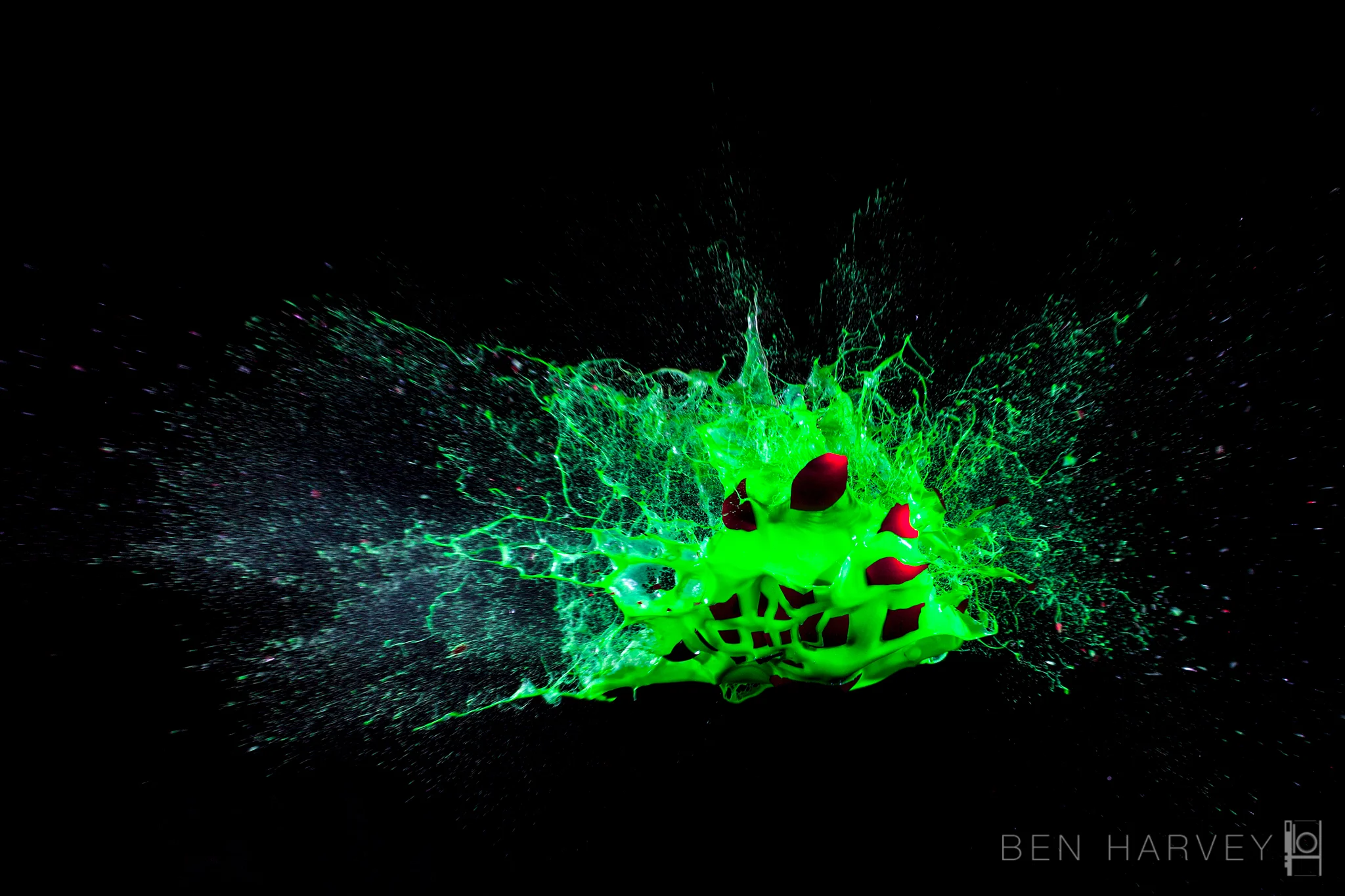An introduction to high speed photography
A splash shot of food colouring and glycerine
High speed photography is eye catching, especially since what we can capture with our cameras is beyond what you can see with the naked eye. A lot of people will be fooled into thinking that you have to have a fast camera, or a quick shutter speed to capture these - however it is the flash that is creating the image, not ambient light.
It doesn't necessarily require specialist equipment, just a lot of patience and enthusiasm. The image of the splash above for example requires a camera, one flash and a radio trigger. If you buy Yongnuo gear, then the flash and the triggers come in under £100. Then you will need some accessories, depending upon what you propose to shoot.
Objects dropping into a fish tank are a classic subject for high speed photography
Having a macro lens for this type of work is ideal, as it lets you work from a distance - reducing the risk of your camera getting wet or even worse getting paint on it! The lighting direction is also critical, as you don't want light to spill onto your black background or highlight the not-so-perfectly clean fish tank. If your budget can't stretch to more than one flash, you can use a reflector or a sheet of white card on the opposite side to the flash, to bounce back some more light into the scene (good if you need a white background).
The next level...
When you have had enough of dropping things, and you want to smash things up, shoot them or blow them up - you are going to need some help from technology. My brother Paul Harvey has invested in a trigger system - all of the images here are from collaborative projects with him. You can find his work at www.zoomedin.co.uk
We are currently filming video tutorials on the process, which will be available for purchase in the near future.
The moment a bullet passes through three light bulbs - all plugged into the mains
Human reaction isn't quick enough to trip the shutter at the moment you shoot through an object or the precise milli-second that a balloon pops. There are various high speed triggers on the market, and you will need to decide what you intend on shooting before you part with your cash. All of the shots here were shot with a Nero trigger, which gave us the option of triggering the flashes when a projectile passes through a laser beam, or the sound of impact.
Croyons meeting their fate
M&M's mid-destruction
Once you have the trigger sorted, the next challenge you will come across is the flash duration of commercially available flashes. As you can see from the above image, the debris is not perfectly sharp, even though the duration of the flash is about 1/90,000 of a second. The only way to get this truly motion-free is to get some science lab equipment or invest in a new LED lighting system specifically invented for high speed photography - that will set you back about £500 though...I can accept that the motion adds to the image, however if you wanted a pin sharp bullet in your shot, it is going to be very hard to achieve!
A Christmas Bauble filled with paint
Once you have the set up ready, then it is just a case of trial and error and experimenting with new techniques, objects and projectiles. Oh, and you are going to need a man-shed where you can safely fire projectiles and make a mess!
Thank you for reading!
















